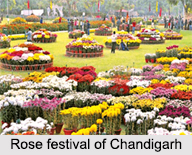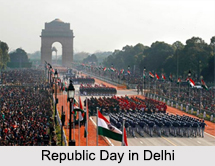 Culture of Indian Union Territories gives the charm to its visitors. Indian union Territories has the best cultural traditions, rituals and customs.
Culture of Indian Union Territories gives the charm to its visitors. Indian union Territories has the best cultural traditions, rituals and customs.
Culture of Andaman and Nicobar Islands
The majority of people of the Andaman and Nicobar Islands are Hindus (69.44%), with Christians forming a large minority of 21.7% of the population. There is a small but significant Muslim (8.51%) minority.
Culture of Chandigarh
Chandigarh is located in the main land India bordered by Haryana and Punjab. Hinduism and Sikhism are the prominent religions of Chandigarh followed by 80.77% and 13.10% people respectively. The minorities are Muslims 4.87%, Christians 0.82%, Buddhists 0.15% and Jains 0.18%, while others are 0.11%. Many institutions serve the minorities in the city. One such being the Roman Catholic Diocese of Shimla and Chandigarh, serving the Catholics, which even has a co-cathedral in the city, Christ the King Co-Cathedral, although it never was a separate bishopric. Chandigarh also hosts many religious places, including the temples of Hindus and Sikhs. ISKCON temple is one among the worship places for Hindus. Nada Sahib Gurudwara, a famous place for Sikh worship lies in its vicinity. Apart from this, there are a couple of historical mosques in Manimajra and Burail, which serve as religious places for Muslims.
Culture of Dadra and Nagar Haveli
The cultural and administrative history of Dadra and Nagar Haveli begins with the defeat of the Koli chieftains of the region by the invading Rajput kings in medieval era. The rule of the Portuguese East India Company in the region continued till the region gained independence on 2nd August 1954 by popular uprising of its population that forced small Portuguese armed forces to leave from administrative and diplomatic arena. Dadra and Nagar Haveli was merged with India in the year 1961 and became a territory of Republic of India. Here, Warli is the language spoken by the Warli people. Konkani and Maratha religious traditions and cultures are mostly followed. Silvassa has a significant Roman Catholic population, speaking a distinct dialect of Portuguese. Silvasa is also a spot for mud rush. The famous Mud Rush Festival is organized by the national and international franchises to promote tourism.
Culture of Daman and Diu
The Catholics are pastorally served by the Metropolitan Roman Catholic Archdiocese of Goa and Daman. The culture of Daman and Diu are mostly followed from Portuguese culture.
Culture of Delhi
This culture has been influenced by its history and historic association as the capital of India. Republic Day, Independence Day and Gandhi Jayanti are the national festivals here. Over the centuries, Delhi has become known for its composite culture which are inspired from Muslims and Colonial culture.
Culture of Lakshadweep
The inhabitants of Lakshadweep were known to practice different religious customs.
There are several festivals that have originated in the island. Eid-Ul-Fitr, Muharram, Bakra Eid and Milad-Un-Nabi are the famous occasions when the people of the island gather in various mosques to commemorate the holy sermons of the various prophets.
Culture of Puducherry
Culture of Puducherry is inspired from French customs. Puducherry also sees the Tamil and Telugu cultures.






